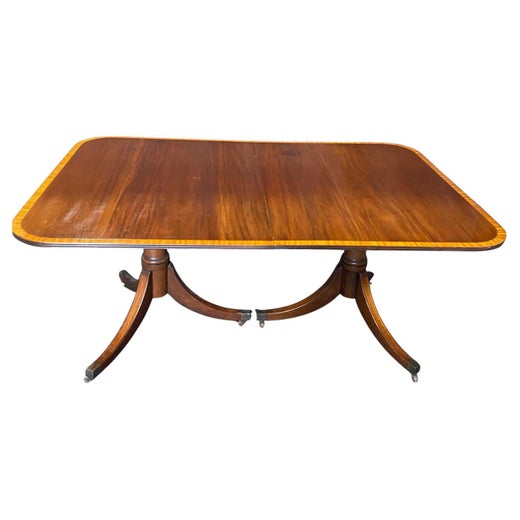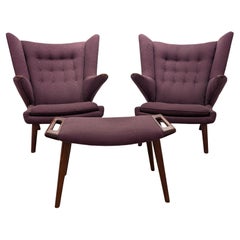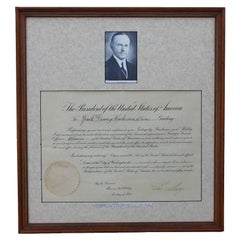Ernest Hagen Sheraton Duncan Phyfe Style Chair, circa 1895
About the Item
- Creator:Duncan Phyfe (Designer),Ernest F. Hagen (Maker)
- Dimensions:Height: 32.25 in (81.92 cm)Width: 19 in (48.26 cm)Depth: 20 in (50.8 cm)Seat Height: 17 in (43.18 cm)
- Style:Sheraton (Of the Period)
- Materials and Techniques:
- Place of Origin:
- Period:
- Date of Manufacture:1895
- Condition:Wear consistent with age and use.
- Seller Location:Houston, TX
- Reference Number:1stDibs: LU1060619261492
Duncan Phyfe
Duncan Phyfe was arguably the greatest early American cabinetmaker — and undoubtedly the most prominent. In his long tenure as the furniture provider of choice to wealthy and fashionable New Yorkers, Phyfe promoted a unique interpretation of the neoclassical style that set a standard for elegance and taste that remains influential in the United States to this day.
Born Duncan Fife, he immigrated with his family from Scotland to Albany, New York, in 1784. Precisely where Phyfe received his training in woodworking and joinery remains unclear, but by 1794 he had moved to New York City, married, made the distinctive change in the spelling of his family name and established a cabinetmaking workshop and showroom in lower Manhattan.
Phyfe likely drew inspiration for his wares from the designs published in pattern books by Georgian-era English furniture makers like Thomas Sheraton. To these, Phyfe added his own variations on carved details that referenced antiquity: lyres, fasces, paw-shaped feet, fluted column-like legs and curved or scrolled armrests. The elegant neoclassical aesthetic helped shape the unformed tastes of clients like fur trader and landowner John Jacob Astor, whose patronage drew other members of the city’s growing merchant class to Phyfe’s door. By the early 1800s, Phyfe had a skilled workforce of more than 100 craftsmen.
Phyfe would dabble in several other furniture styles such as Empire, Rococo and Gothic Revival — and became a noted Federal-style designer — as decorating trends came and went, but neoclassicism remained the keynote of his work. Assisted by his sons, Phyfe stayed in business until 1847 and retired as one of the richest men in the city. He seldom applied a label or maker’s mark to his workshop’s creations, perhaps believing his signature style and outstanding craftsmanship spoke for themselves.
Despite his company’s large output, relatively few pieces can be conclusively ascribed to Phyfe, and most of those are in museums. A popular 1922 exhibition of Phyfe’s work at the Metropolitan Museum in New York revived interest in his work and made his name a byword for fine American antique furniture. As a consequence, Phyfe attributions abound in stores and galleries.
Collectors are advised to buy only from the most reputable dealers and to display that purchase proudly if you do. Furniture by Duncan Phyfe is a true national treasure.Find antique Duncan Phyfe furniture on 1stDibs.
You May Also Like
Vintage 1970s Unknown Dining Room Chairs
Wood
Antique Mid-19th Century American Victorian Side Chairs
Upholstery, Maple
Mid-20th Century American Mid-Century Modern Dining Room Chairs
Upholstery, Mahogany
Mid-20th Century American Federal Side Chairs
Upholstery, Mahogany
Vintage 1940s Side Chairs
Cherry
Early 20th Century Unknown Empire Sofas
Upholstery, Wood
20th Century American Other Side Chairs
Upholstery, Plastic, Mahogany
Early 20th Century American Other Side Chairs
Upholstery, Mahogany
20th Century Dutch Other Side Chairs
Upholstery, Mahogany
Mid-20th Century American Mid-Century Modern Side Chairs
Plastic, Mahogany
More From This Seller
View AllVintage 1960s Danish Scandinavian Modern Lounge Chairs
Teak, Fabric
Vintage 1920s American Modern Historical Memorabilia
Paper


